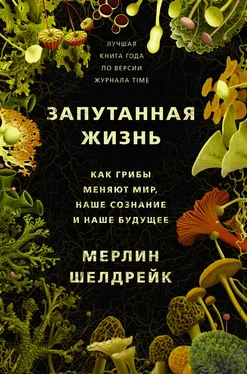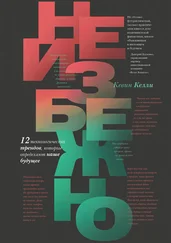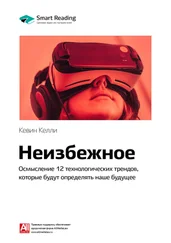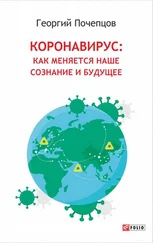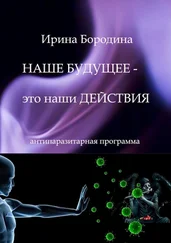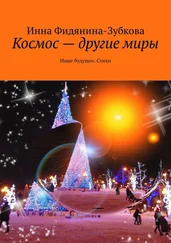Gilbert CD, Sigman M. 2007. Brain states: top-down influences in sensory processing. Neuron 54: 677–96.
Gilbert JA, Lynch SV. 2019. Community ecology as a framework for human microbiome research. Nature Medicine 25: 884–89.
Gilbert SF, Sapp J, Tauber AI. 2012. A symbiotic view of life: we have never been individuals. The Quarterly Review of Biology 87: 325–41.
Giovannetti M, Avio L, Fortuna P, Pellegrino E, Sbrana C, Strani P. 2006. At the Root of the Wood Wide Web. Plant Signaling & Behavior 1: 1–5.
Giovannetti M, Avio L, Sbrana C. 2015. “Functional Significance of Anastomosis in Arbuscular Mycorrhizal Networks.” In Mycorrhizal Networks . Horton T, ed. Springer International Publishing, pp. 41–67.
Giovannetti M, Sbrana C, Avio L, Strani P. 2004. Patterns of below-ground plant interconnections established by means of arbuscular mycorrhizal networks. New Phytologist 164: 175–81.
Gluck-Thaler E, Slot JC. 2015. Dimensions of horizontal gene transfer in eukaryotic microbial pathogens . PLOS Pathogens 11: e1005156.
Godfray CH, Beddington JR, Crute IR, Haddad L, Lawrence D, Muir JF, Pretty J, Robinson S, Thomas SM, Toulmin C. 2010. Food security: the challenge of feeding 9 billion people. Science 327: 812–18.
Godfrey-Smith P. 2017. Other Minds: The Octopus and the Evolution of Intelligent Life . London, UK: William Collins.
Goffeau A, Barrell B, Bussey H, Davis R, Dujon B, Feldmann H, Galibert F, Hoheisel J, Jacq C, Johnston M, et al. 1996. Life with 6000 Genes. Science 274: 546–67.
Gogarten PJ, Townsend JP. 2005. Horizontal gene transfer, genome innovation and evolution. Nature Reviews Microbiology 3: 679–87.
Gond SK, Kharwar RN, White JF. 2014. Will fungi be the new source of the blockbuster drug taxol? Fungal Biology Reviews 28: 77–84.
Gontier N. 2015a. “Historical and Epistemological Perspectives on What Horizontal Gene Transfer Mechanisms Contribute to Our Understanding of Evolution.” In Reticulate Evolution . Gontier N, ed. Springer International Publishing.
Gontier N. 2015b. “Reticulate Evolution Everywhere.” In Reticulate Evolution . Gontier N, ed. Springer International Publishing.
Gordon J, Knowlton N, Relman DA, Rohwer F, Youle M. 2013. Superorganisms and holobionts. Microbe 8: 152–53.
Goryachev AB, Lichius A, Wright GD, Read ND. 2012. Excitable behavior can explain the “ping-pong” mode of communication between cells using the same chemoattractant. BioEssays 34: 259–66.
Gorzelak MA, Asay AK, Pickles BJ, Simard SW. 2015. Inter-plant communication through mycorrhizal networks mediates complex adaptive behaviour in plant communities. AoB PLANTS 7: plv050.
Gott JR. 2016. The Cosmic Web: Mysterious Architecture of the Universe . Princeton, NJ: Princeton University Press.
Govoni F, Orrù E, Bonafede A, Iacobelli M, Paladino R, Vazza F, Murgia M, Vacca V, Giovannini G, Feretti L, et al. 2019. A radio ridge connecting two galaxy clusters in a filament of the cosmic web. Science 364: 981–84.
Gow NAR, Morris BM. 2009. The electric fungus. Botanical Journal of Scotland 47: 263–77.
Goward T. 1995. Here for a Long Time, Not a Good Time. Nature Canada 24: 9. www.waysofenlichenment.net/public/pdfs/Goward_1995_Here_for_a_good_time_not_a_long_time.pdf [accessed October 29, 2019].
Goward T. 2009a. Twelve Readings on the Lichen Thallus IV – Re-emergence. Evansia 26: 1–6. www.waysofenlichenment.net/ways/readings/essay4 [accessed October 29, 2019].
Goward T. 2009b. Twelve Readings on the Lichen Thallus V–Conversational. Evansia 26: 31–37. www.waysofenlichenment.net/ways/readings/essay5 [accessed October 29, 2019].
Goward T. 2009c. Twelve Readings on the Lichen Thallus VII – Species. Evansia 26: 153–62. www.waysofenlichenment.net/ways/readings/essay7 [accessed October 29, 2019].
Goward T. 2010. Twelve Readings on the Lichen Thallus VIII – Theoretical. Evansia 27: 2–10. www.waysofenlichenment.net/ways/readings/essay8 [accessed October 29, 2019].
Gregory PH. 1982. Fairy rings; free and tethered. Bulletin of the British Mycological Society 16: 161–63.
Griffiths D. 2015. Queer Theory for Lichens. UnderCurrents 19: 36–45.
Griffiths R, Johnson M, Carducci M, Umbricht A, Richards W, Richards B, Cosimano M, Klinedinst M. 2016. Psilocybin produces substantial and sustained decreases in depression and anxiety in patients with life-threatening cancer: A randomized double-blind trial. Journal of Psychopharmacology 30: 1181–197.
Griffiths R, Richards W, Johnson M, McCann U, Jesse R. 2008. Mystical-type experiences occasioned by psilocybin mediate the attribution of personal meaning and spiritual significance 14 months later. Journal of Psychopharmacology 22: 621–32.
Grman E. 2012. Plant species differ in their ability to reduce allocation to non-beneficial arbuscular mycorrhizal fungi. Ecology 93: 711–18.
Grube M, Cernava T, Soh J, Fuchs S, Aschenbrenner I, Lassek C, Wegner U, Becher D, Riedel K, Sensen CW, et al. 2015. Exploring functional contexts of symbiotic sustain within lichen-associated bacteria by comparative omics. The ISME Journal 9: 412–24.
Gupta M., Prasad A, Ram M, Kumar S. 2002. Effect of the vesicular – arbuscular mycorrhizal (VAM) fungus Glomus fasciculatum on the essential oil yield related characters and nutrient acquisition in the crops of different cultivars of menthol mint ( Mentha arvensis ) under field conditions. Bioresource Technology 81: 77–79.
Guzmán G, Allen JW, Gartz J. 1998. A worldwide geographical distribution of the neurotropic fungi, an analysis and discussion. Annali del Museo Civico di Rovereto: Sezione Archeologia, Storia, Scienze Naturali . 14: 189–280. www.museocivico.rovereto.tn.it/UploadDocs/104_art09-Guzman%20&%2 °C.pdf [accessed October 29, 2019].
Hague T, Florini M, Andrews P. 2013. Preliminary in vitro functional evidence for reflex responses to noxious stimuli in the arms of Octopus vulgaris. Journal of Experimental Marine Biology and Ecology 447: 100–5.
Hall IR, Brown GT, Zambonelli A. 2007. Taming the Truffle . Portland, OR: Timber Press.
Hamden E. 2019. Observing the cosmic web. Science 366: 31–32.
Haneef M, Ceseracciu L, Canale C, Bayer IS, Heredia-Guerrero JA, Athanassiou A. 2017. Advanced materials from fungal mycelium: fabrication and tuning of physical properties. Scientific Reports 7: 41292.
Hanson KL, Nicolau DV, Filipponi L, Wang L, Lee AP, Nicolau DV. 2006. Fungi use efficient algorithms for the exploration of microfluidic networks. Small 2: 1212–220.
Haraway DJ. 2004. Crystals, Fabrics, and Fields . Berkeley, CA: North Atlantic Books.
Haraway DJ. 2016. Staying with the Trouble: Making Kin in the Chthulucene . Durham, NC: Duke University Press.
Harms H, Schlosser D, Wick LY. 2011. Untapped potential: exploiting fungi in bioremediation of hazardous chemicals. Nature Reviews Microbiology 9: 177–92.
Harold FM, Kropf DL, Caldwell JH. 1985. Why do fungi drive electric currents through themselves? Experimental Mycology 9: 183–86.
Hart MM, Antunes PM, Chaudhary V, Abbott LK. 2018. Fungal inoculants in the field: Is the reward greater than the risk? Functional Ecology 32: 126–35.
Hastings A, Abbott KC, Cuddington K, Francis T, Gellner G, Lai Y-C, Morozov A, Petrovskii S, Scranton K, Zeeman M. 2018. Transient phenomena in ecology. Science 361: eaat6412.
Hawksworth D. 2001. The magnitude of fungal diversity: the 1.5 million species estimate revisited. Mycological Research 12: 1422–432.
Читать дальше
Конец ознакомительного отрывка
Купить книгу
